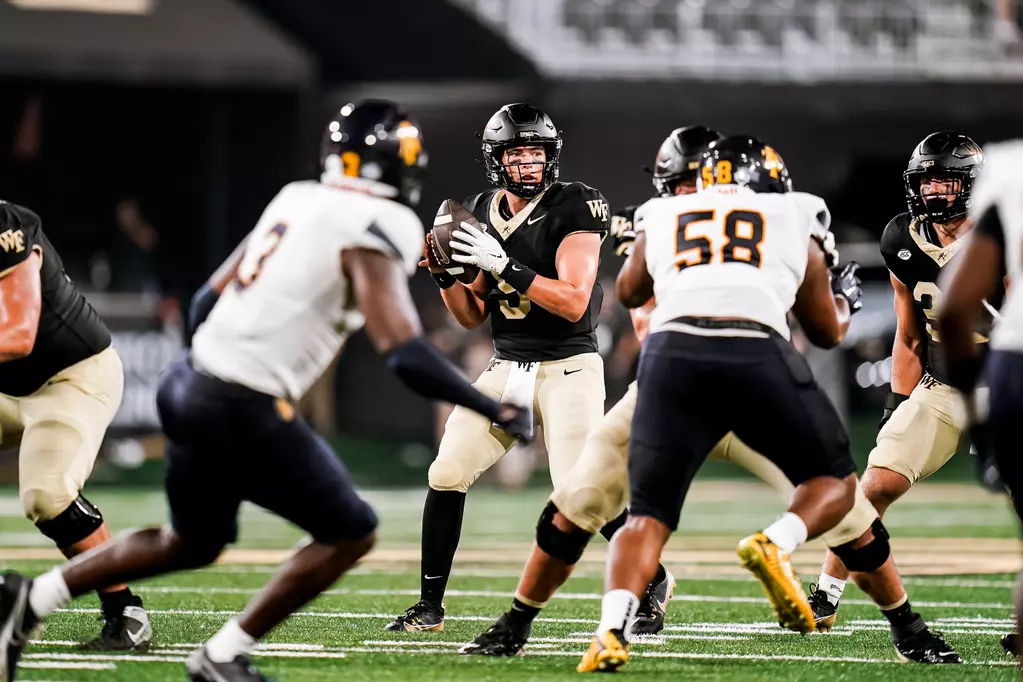By Jerry Ratcliffe

Being an offensive guy, Tony Elliott has always been somewhat in awe of Dave Clawson’s scheme at Wake Forest. For most of the last several years, Clawson’s offense has been on top or nearly on top of the ACC in total offense and points scored.
Few defensive coordinators have been successful in shutting down the Demon Deacons, something Virginia must do this Saturday night in Winston-Salem if the Cavaliers are going to get off to a 2-0 start.
“It’s actually pretty fascinating,” Elliott said this week. “As an offensive guy, I’ve marveled at it.
“Coaching running backs, it’s like, how do you train the running back to be so slow, because they literally skip and walk. I’ve never seen anything like it, but [Wake] is phenomenal at it and they’ve perfected it.”
Wake’s offense isn’t a pure option offense, but shares some concepts, particularly with the quarterback being proficient at putting the ball in the running backs’ belly and riding out the play to the last second and either leaving it there or pulling the ball out for a quarterback run or pass (RPO).
Like the pure option, if the Deacs are successful with the dive play through the ‘A’ gaps (between the center and guards), it makes it a long night for the defense. Gashing the A gap, not only takes the heart out of the defensive front seven, but allows the rest of the offensive attack to be more effective.
“You’ve got to be able to have the run accounted for and then you have to make sure that you’re disciplined to stay in position so you don’t give them the big windows on the back end when the quarterback pulls it back to throw it.
“Really, you want to force the quarterback to become a runner if that’s probably the option that you want the most, because the backs do a really good job.”
It’s called a mesh for obvious reasons, but defenses have been baffled on how slow things come together, yet can grind out big chunks of yardage if there’s any breakdowns.
“[The running backs] are slow, slow, and once they get the ball, pow, they’re gone,” Elliott said. “They hide in between those big offensive linemen and you can’t find them and then they spit out. So you have to stop the run, but you also have to account for the quarterback and you’ve got to be in position on the back end so they can’t expose you with big windows for the explosive plays downfield.”


